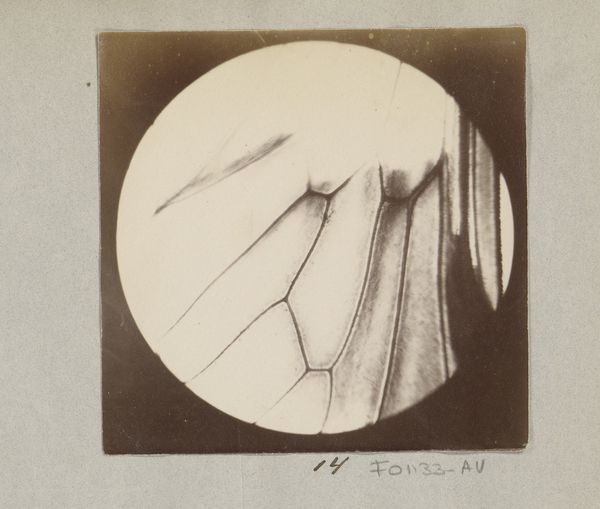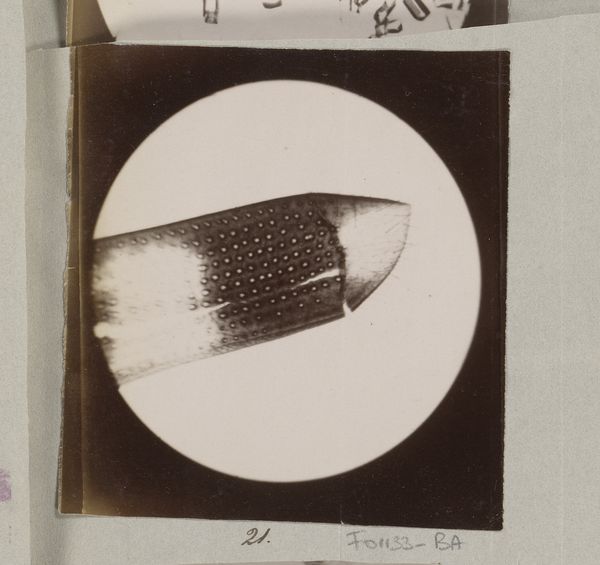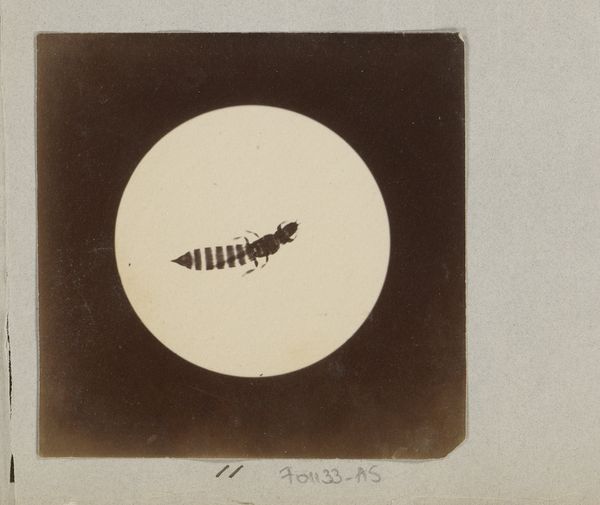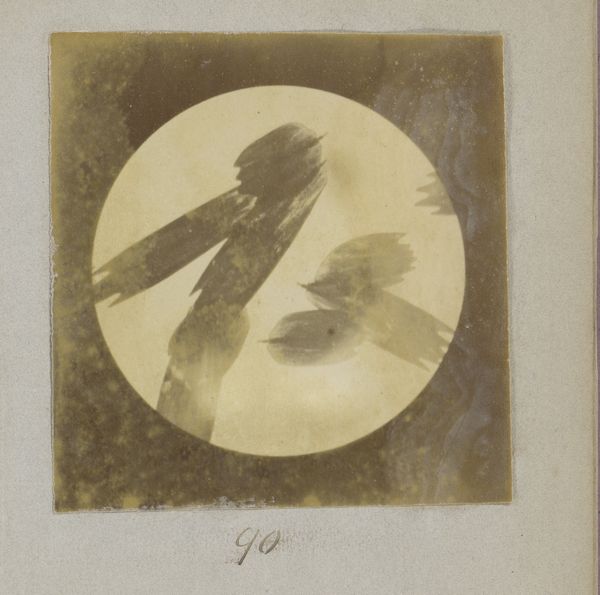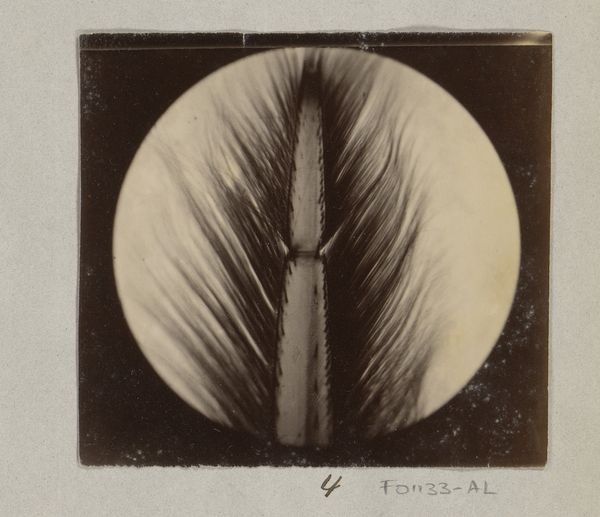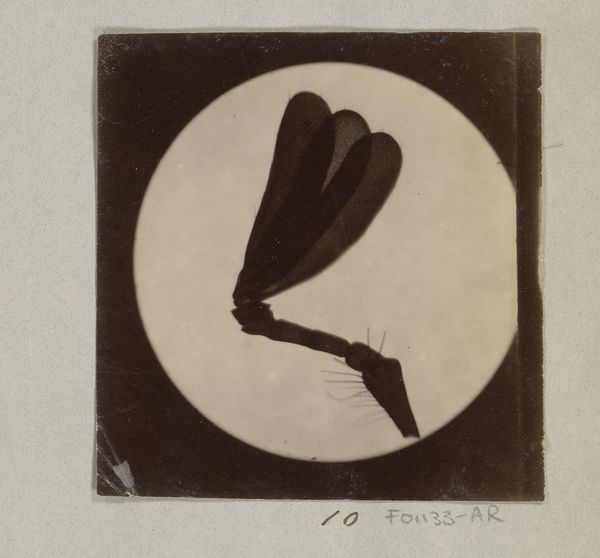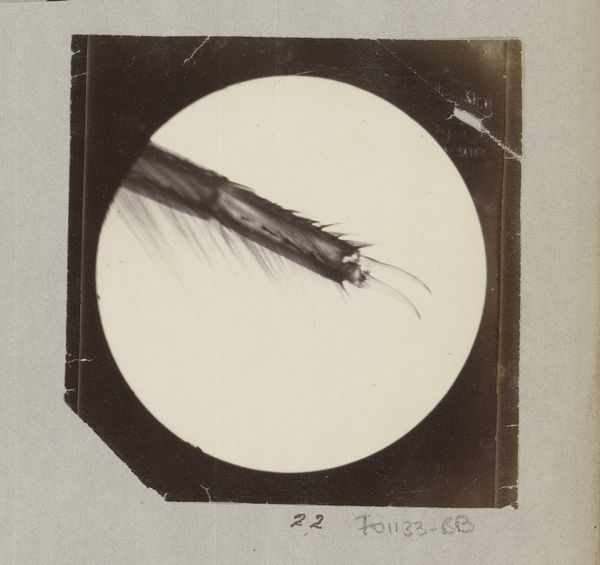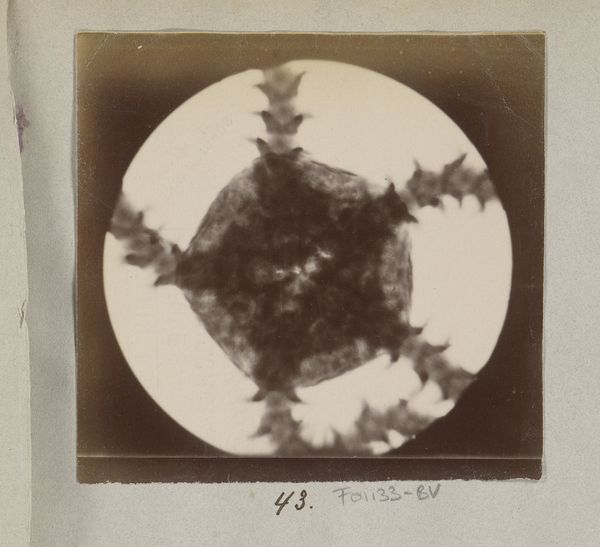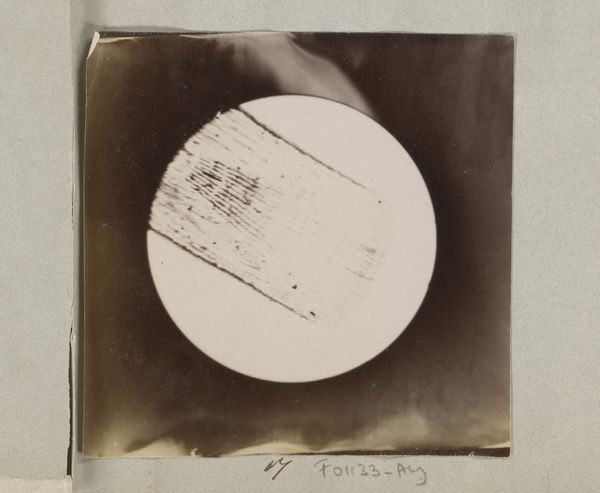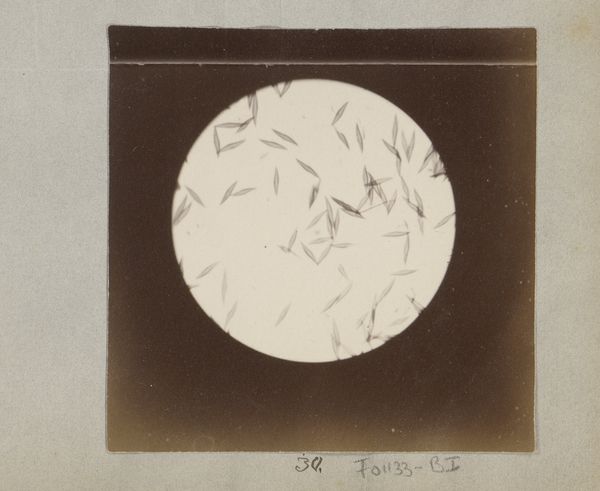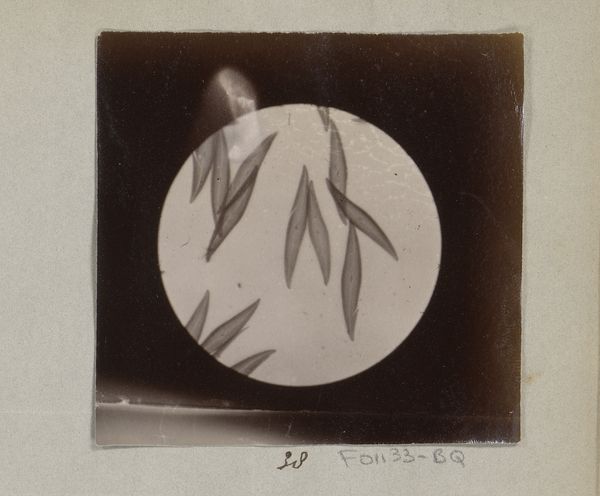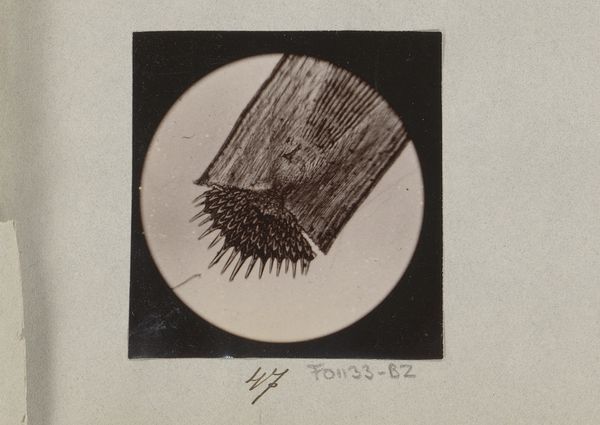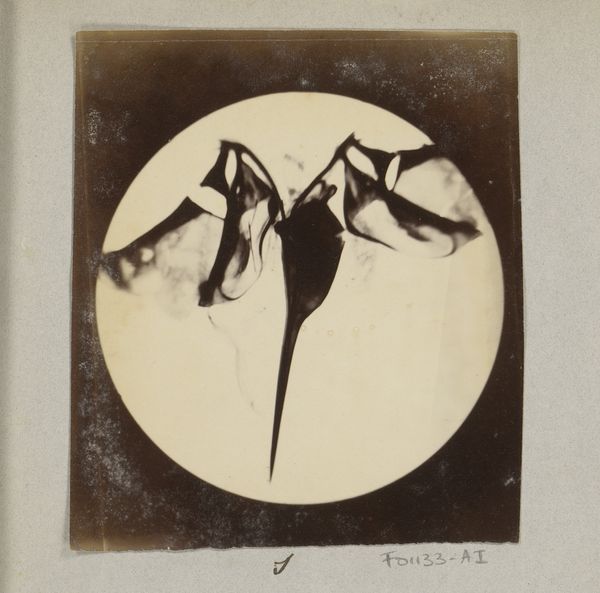
Microscopische opname van schubben van een vlindervleugel, 350 keer vergroot 1887 - 1888
0:00
0:00
photography, gelatin-silver-print
#
still-life-photography
#
photography
#
gelatin-silver-print
#
realism
Dimensions: height 87 mm, width 86 mm
Copyright: Rijks Museum: Open Domain
Curator: Welcome. We’re standing before “Microscopische opname van schubben van een vlindervleugel, 350 keer vergroot,” or “Microscopic image of scales of a butterfly wing, magnified 350 times,” by Marinus Pieter Filbri. This gelatin silver print dates from around 1887-1888. Editor: It has an alien feel about it, almost gothic. Like some unearthed artifact, despite its ostensibly scientific purpose. The greyscale and stark contrast create a somewhat somber mood. Curator: That interplay between scientific exploration and artistic rendering is what intrigues me most. Think about the social context; microscopy was becoming more accessible, fueling scientific curiosity and even spectacle. Editor: Right. It reflects a cultural fascination with revealing hidden worlds. We often celebrate science as objective, but this work betrays the hand of the artist, a selection and framing of reality. Consider the power dynamic inherent in observing something so closely. Curator: Absolutely. And Filbri was not simply recording; the deliberate composition transforms what could be a dry record into a study of form and light. Realism becomes abstracted through the lens. Editor: Which, historically, opens fascinating avenues when you consider it intersects with the time where debates around the societal "usefulness" and moral panics over artistic license where rampant. This photograph could either become scientific visual support, a still life capturing a form or it can transform into "degenerate art", something the establishment may have deemed “dangerous”. Curator: True. Photography's place in the artistic hierarchy was also contested then, wasn’t it? Images like this complicated that discussion, challenging notions of authorship and representation. And consider how such technology made nature suddenly open for all to explore and see from any viewpoint. Editor: So while we acknowledge that, looking at it today in our contemporary landscape, this image could very easily speak to themes of fragility, the beauty of natural architecture, perhaps even the precarity of the insect world within our current climate crisis. It has such enduring impact, wouldn't you agree? Curator: Yes, indeed. I’m reminded again how art transcends its initial purpose, how history provides multiple lenses through which to consider its meaning. Editor: Well, its certainly given me lots to consider! Thanks!
Comments
No comments
Be the first to comment and join the conversation on the ultimate creative platform.
